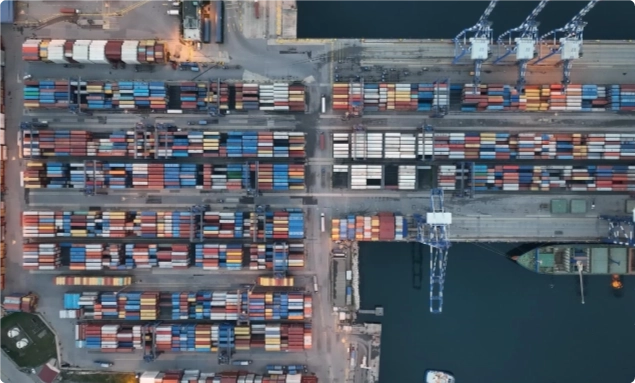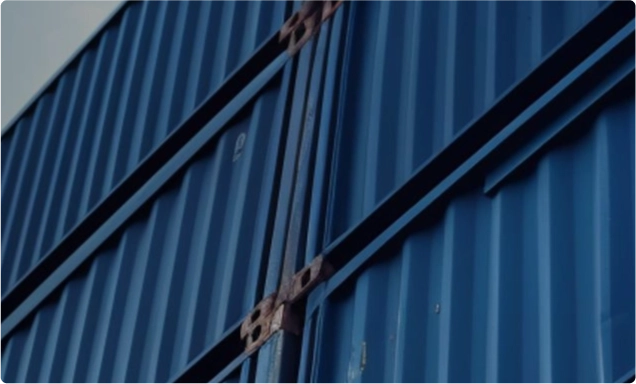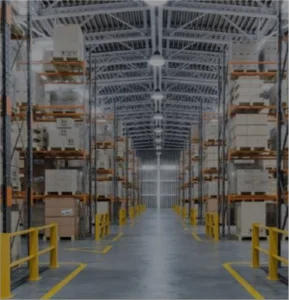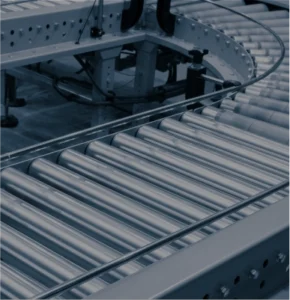Multimodal inland planner
Client
Funded by H2020 European Commission
Partner
The problem
Corealis is a strategic framework supported by disruptive technologies, including IoT, data analytics, next generation traffic management and emerging 5G networks for cargo ports.
Predicting cargo operations contributes to the planning and control in port terminals and increases reliability and resiliency of port operations in an ecosystem with high uncertainties.
The solution
We developed a solution for the Port of Antwerp Burges to optimise port connections and container routes saving time, costs and CO2 emissions.
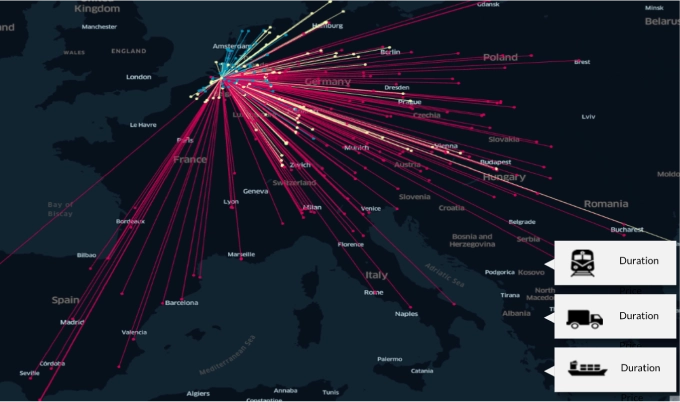
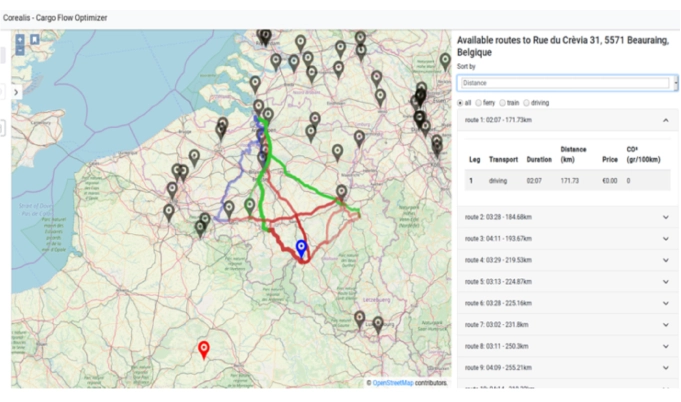
We developed an ad hoc algorithm to predict container flows en route to a specific place and time, as well as type of transport they are using.

Specifically with the port of Antwerp, we developed:
- A tool to generate and calculate multimodal routes (train, barge and truck) for the transport of containers from PoA to any point in Europe. To do so, the information of connections between PoA and inland terminals was used based on the data of the actual offer of the port’s transport operators. The tool aims to give Freight forwarders visibility of the possibilities of transport beyond the “easy” but not efficient option of the truck. The tool gave estimated cost of time, money and CO2 consumption.
- A comprehensive study of how to optimise container transport based on historical information on container arrivals. Here the difficulty was to combine this information with that of the destinations of the containers since the destination was not known. For this reason, we combined real data with statistical information from Eurostat, as well as other sources such as river transport data, which was a little more complete.
Data
- Overview of the most efficient connections from the port to its hinterland by rail, barge or truck.
- Optimal door-to-door container routes between two points, determining the optimal in terms of estimated DURATION, PRICE and CO2 EMISSIONS
- Data sources:

Results
The innovations were implemented and tested in real operating conditions in 5 Living Labs: Piraeus port (GR), Valencia port (SP), Antwerp port (HOL), Livorno port (ITA) and Haminakotka port (FIN).


